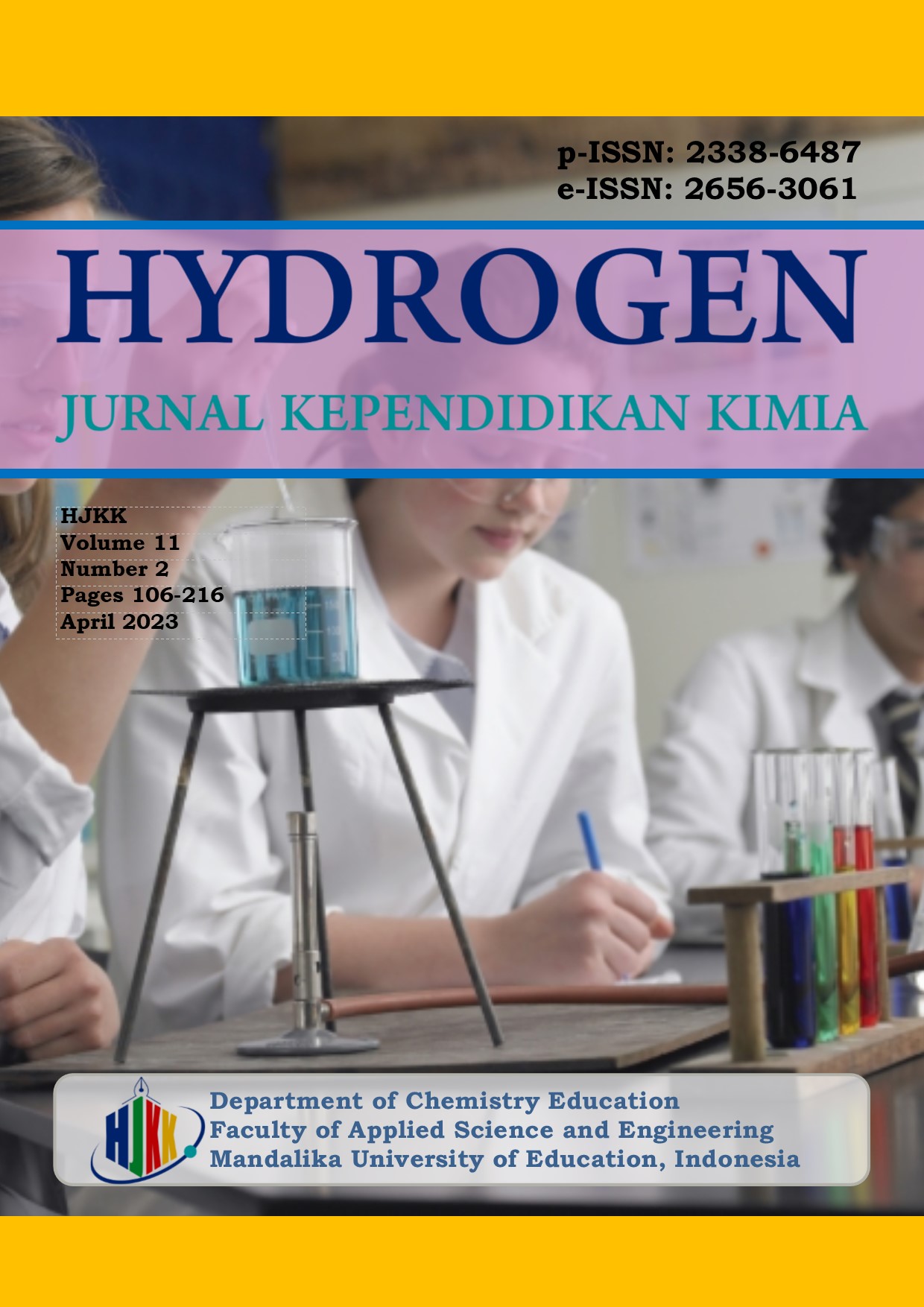A Characterization of Virgin Coconut Oil Obtained via Extraction Utilizing Tamarind Seed Skin Waste
DOI:
https://doi.org/10.33394/hjkk.v11i2.7409Keywords:
VCO, extraction, tamarind seed coat, organoleptic, free fatty acids, peroxide numberAbstract
This study aims to provide a characterization of virgin coconut oil obtained through the acidification method, using tamarind seed skin as an oil extractor. The utilization of tamarind seeds is motivated by the fact that they are considered a waste product and are not commonly used by the community. Additionally, tamarind seeds contain organic acids, such as citric acid, tartaric acid, and malic acid, which can effectively hydrolyze the bond between oil and other substances in coconut flesh, such as proteins and carbohydrates. The characterization of virgin coconut oil includes a range of tests, such as organoleptic evaluation, density measurement, moisture content determination, free fatty acid analysis, and peroxide number determination, which are compared to coconut oil produced through heating. The virgin coconut oil is extracted from grated coconut flesh by mixing tamarind seed skin, which has been mashed, with grated coconut flesh in a 1:4 ratio. This mixture is then homogenized and incubated for approximately 10 minutes to extract the oil. The organoleptic evaluation results of the virgin coconut oil produced through acidification demonstrate a light yellow color with no detectable taste or odor, while the coconut oil produced through heating has a dark yellow color, a slightly rancid smell, and a distinct coconut oil taste. The density of the virgin coconut oil produced through acidification and heating is 0.870 g/mL and 0.868 g/mL, respectively. The moisture content of the virgin coconut oil produced through acidification and heating methods is 0.1713% and 0.1700%, respectively. The free fatty acid content for the acidification and heating methods is 0.14% and 3.252%, respectively. The peroxide number test shows that the acidification method yields a higher value of 27.41 meq O2 / kg compared to 5.694 meq O2 / kg for heating.
Downloads
Published
How to Cite
Issue
Section
Citation Check
License
License and Publishing Agreement
In submitting the manuscript to the journal, the authors certify that:
- They are authorized by their co-authors to enter into these arrangements.
- The work described has not been formally published before, except in the form of an abstract or as part of a published lecture, review, thesis, or overlay journal.
- That it is not under consideration for publication elsewhere,
- That its publication has been approved by all the author(s) and by the responsible authorities – tacitly or explicitly – of the institutes where the work has been carried out.
- They secure the right to reproduce any material that has already been published or copyrighted elsewhere.
- They agree to the following license and publishing agreement.
Copyright
Authors who publish with Hydrogen: Jurnal Kependidikan Kimia agree to the following terms:
- Authors retain copyright and grant the journal right of first publication with the work simultaneously licensed under a Creative Commons Attribution License (CC BY-SA 4.0) that allows others to share the work with an acknowledgment of the work's authorship and initial publication in this journal.Â
- Authors are able to enter into separate, additional contractual arrangements for the non-exclusive distribution of the journal's published version of the work (e.g., post it to an institutional repository or publish it in a book), with an acknowledgment of its initial publication in this journal.
- Authors are permitted and encouraged to post their work online (e.g., in institutional repositories or on their website) prior to and during the submission process, as it can lead to productive exchanges, as well as earlier and greater citation of published work.
Licensing for Data Publication
Hydrogen: Jurnal Kependidikan Kimia uses a variety of waivers and licenses, that are specifically designed for and appropriate for the treatment of data: Open Data Commons Attribution License, http://www.opendatacommons.org/licenses/by/1.0/ (default) Other data publishing licenses may be allowed as exceptions (subject to approval by the editor on a case-by-case basis) and should be justified with a written statement from the author, which will be published with the article.







